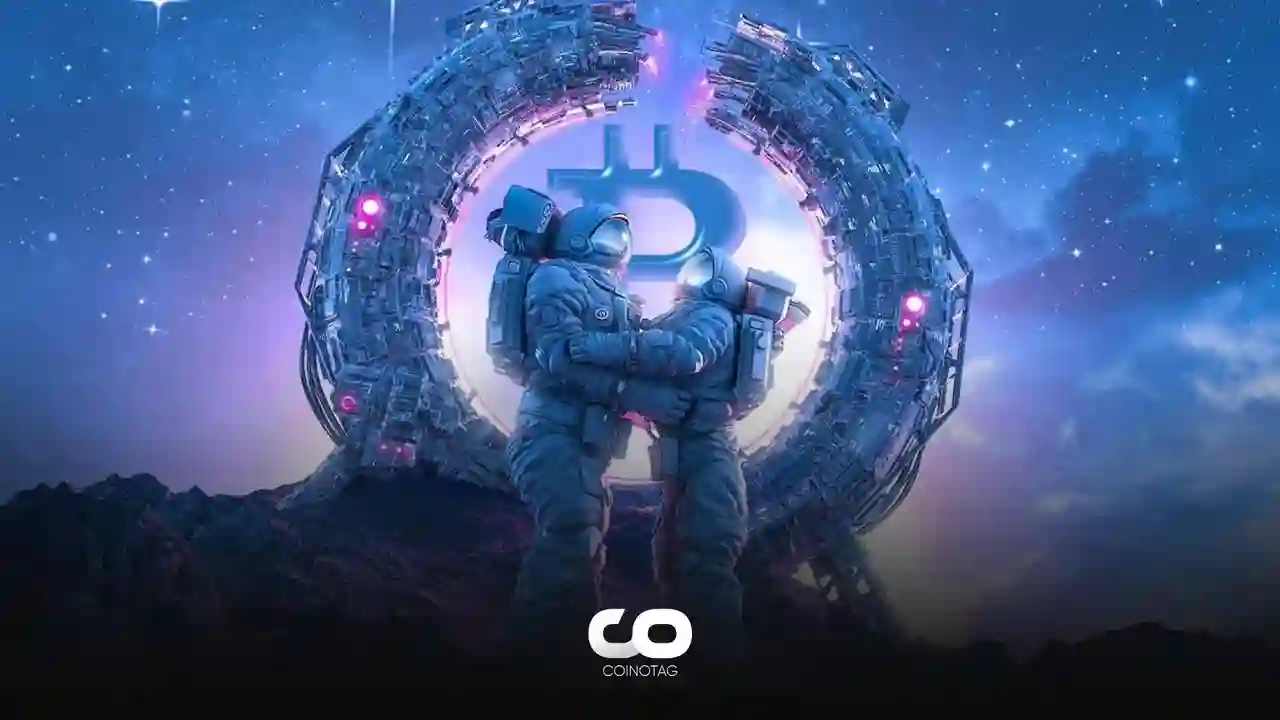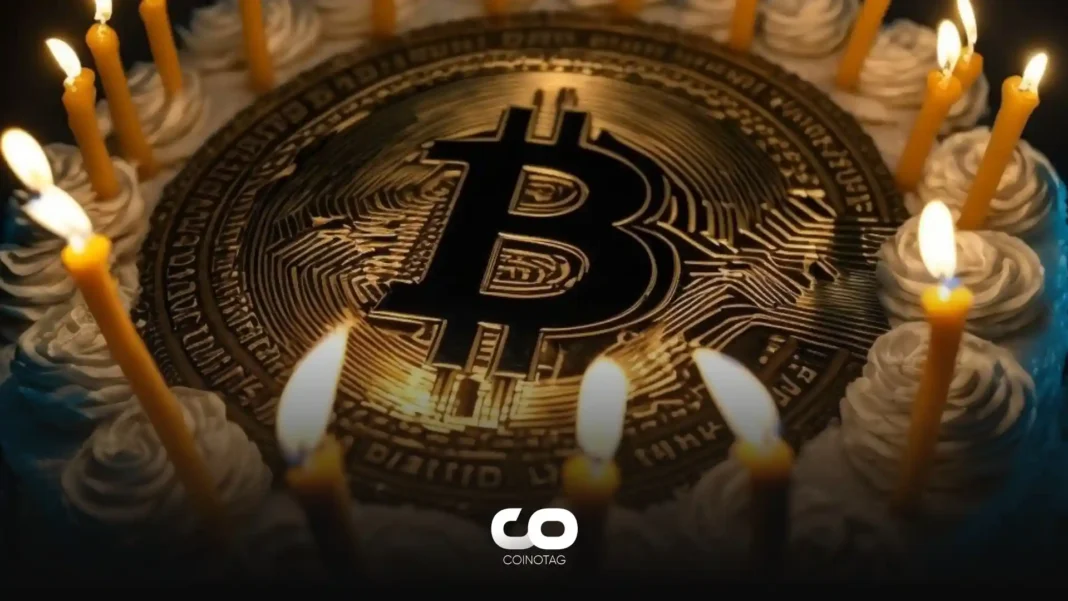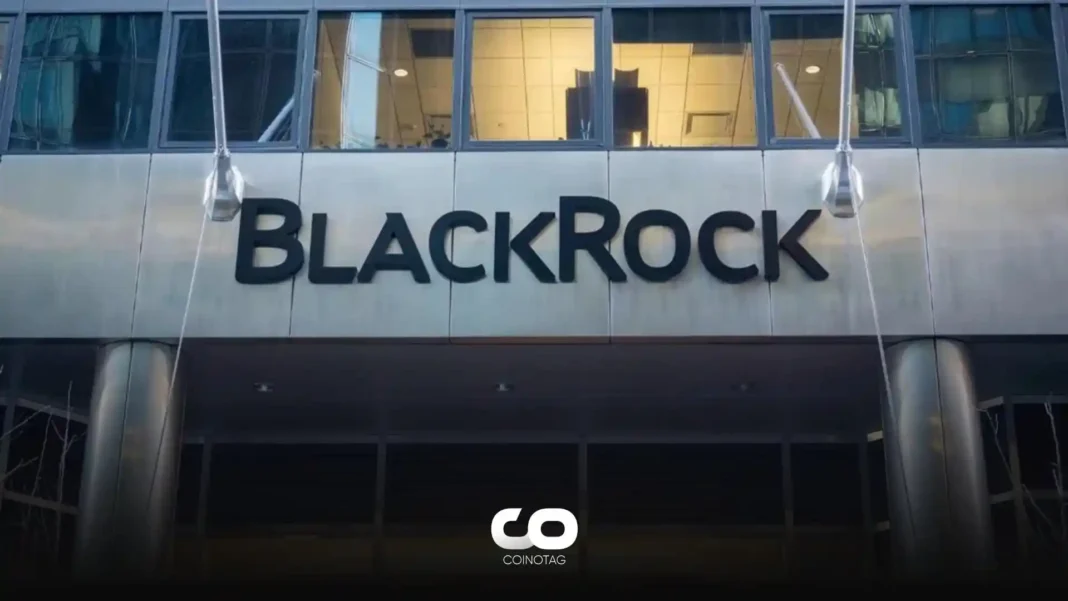| COINOTAG recommends • Exchange signup |
| 💹 Trade with pro tools |
| Fast execution, robust charts, clean risk controls. |
| 👉 Open account → |
| COINOTAG recommends • Exchange signup |
| 🚀 Smooth orders, clear control |
| Advanced order types and market depth in one view. |
| 👉 Create account → |
| COINOTAG recommends • Exchange signup |
| 📈 Clarity in volatile markets |
| Plan entries & exits, manage positions with discipline. |
| 👉 Sign up → |
| COINOTAG recommends • Exchange signup |
| ⚡ Speed, depth, reliability |
| Execute confidently when timing matters. |
| 👉 Open account → |
| COINOTAG recommends • Exchange signup |
| 🧭 A focused workflow for traders |
| Alerts, watchlists, and a repeatable process. |
| 👉 Get started → |
| COINOTAG recommends • Exchange signup |
| ✅ Data‑driven decisions |
| Focus on process—not noise. |
| 👉 Sign up → |
- The first Bitcoin block, also known as the Genesis block, was mined by the mysterious creator Satoshi Nakamoto on January 3, 2009.
- Bitcoin ATMs emerged almost five years after the first block was mined, with historical data confirming that the first ATM became operational in October 2013.
- Fifteen years after the creation of the first block, Bitcoin miners continue to mine blocks in exchange for rewards.
Bitcoin has turned 15 today: The journey initiated by Satoshi Nakamoto in 2009 has reached massive proportions.
Bitcoin Celebrates Its 15th Birthday

While many celebrate October 31, 2008, when the technical review of Bitcoin was published, as Bitcoin’s original birthday, others take a more technical approach to determine its true age. January 3 is the actual date when Bitcoin came to life as a store of value and a transferable currency.
The first Bitcoin block, also known as the Genesis block, was mined by the mysterious creator Satoshi Nakamoto on January 3, 2009. Subsequently, despite opposition from critics, mainstream media, politicians, and governments worldwide, a triumphant era unfolded. On the occasion of Bitcoin’s 15th birthday, let’s take an overview of the Bitcoin ecosystem.
| COINOTAG recommends • Professional traders group |
| 💎 Join a professional trading community |
| Work with senior traders, research‑backed setups, and risk‑first frameworks. |
| 👉 Join the group → |
| COINOTAG recommends • Professional traders group |
| 📊 Transparent performance, real process |
| Spot strategies with documented months of triple‑digit runs during strong trends; futures plans use defined R:R and sizing. |
| 👉 Get access → |
| COINOTAG recommends • Professional traders group |
| 🧭 Research → Plan → Execute |
| Daily levels, watchlists, and post‑trade reviews to build consistency. |
| 👉 Join now → |
| COINOTAG recommends • Professional traders group |
| 🛡️ Risk comes first |
| Sizing methods, invalidation rules, and R‑multiples baked into every plan. |
| 👉 Start today → |
| COINOTAG recommends • Professional traders group |
| 🧠 Learn the “why” behind each trade |
| Live breakdowns, playbooks, and framework‑first education. |
| 👉 Join the group → |
| COINOTAG recommends • Professional traders group |
| 🚀 Insider • APEX • INNER CIRCLE |
| Choose the depth you need—tools, coaching, and member rooms. |
| 👉 Explore tiers → |
Bitcoin ATMs emerged almost five years after the first block was mined, with historical data confirming that the first ATM became operational in October 2013. The goal was to provide people with another way to exchange their local fiat currencies for Bitcoin. While the Bitcoin ATM network initially experienced irregular growth, thousands of Bitcoin and crypto ATMs continued to be added every year as mass Bitcoin adoption took place globally. At its peak in 2021, nearly 40,000 Bitcoin ATMs were active in the network.
In the period after 2021, geopolitical tensions and negative investor sensitivity in a bear market environment led to an instant but short-lived decline in Bitcoin ATMs. However, as of January 3, 2024, nearly 34,000 Bitcoin ATMs are still operational worldwide.
| COINOTAG recommends • Exchange signup |
| 📈 Clear interface, precise orders |
| Sharp entries & exits with actionable alerts. |
| 👉 Create free account → |
| COINOTAG recommends • Exchange signup |
| 🧠 Smarter tools. Better decisions. |
| Depth analytics and risk features in one view. |
| 👉 Sign up → |
| COINOTAG recommends • Exchange signup |
| 🎯 Take control of entries & exits |
| Set alerts, define stops, execute consistently. |
| 👉 Open account → |
| COINOTAG recommends • Exchange signup |
| 🛠️ From idea to execution |
| Turn setups into plans with practical order types. |
| 👉 Join now → |
| COINOTAG recommends • Exchange signup |
| 📋 Trade your plan |
| Watchlists and routing that support focus. |
| 👉 Get started → |
| COINOTAG recommends • Exchange signup |
| 📊 Precision without the noise |
| Data‑first workflows for active traders. |
| 👉 Sign up → |
About 1 million Bitcoin blocks have been mined
Fifteen years after the creation of the first block, Bitcoin miners continue to mine blocks in exchange for rewards. The increasing interest of individuals and companies in Bitcoin mining confirms the process as a valid business model protecting the Bitcoin network from external attacks. Millions of Bitcoin transactions that occurred over 15 years have been permanently recorded in 825,000 blocks, and neither miners nor investors show any intention of stopping.
Widespread adoption of Bitcoin
Despite strong resistance to mainstream adoption, the significance of Bitcoin as the money of the future was first understood by those coming from hyperinflationary economies forced to combat inflation. By leading the way in establishing Bitcoin as a legal means of payment, El Salvador demonstrated Bitcoin’s resilience in the face of global economic turmoil within two years.
| COINOTAG recommends • Traders club |
| ⚡ Futures with discipline |
| Defined R:R, pre‑set invalidation, execution checklists. |
| 👉 Join the club → |
| COINOTAG recommends • Traders club |
| 🎯 Spot strategies that compound |
| Momentum & accumulation frameworks managed with clear risk. |
| 👉 Get access → |
| COINOTAG recommends • Traders club |
| 🏛️ APEX tier for serious traders |
| Deep dives, analyst Q&A, and accountability sprints. |
| 👉 Explore APEX → |
| COINOTAG recommends • Traders club |
| 📈 Real‑time market structure |
| Key levels, liquidity zones, and actionable context. |
| 👉 Join now → |
| COINOTAG recommends • Traders club |
| 🔔 Smart alerts, not noise |
| Context‑rich notifications tied to plans and risk—never hype. |
| 👉 Get access → |
| COINOTAG recommends • Traders club |
| 🤝 Peer review & coaching |
| Hands‑on feedback that sharpens execution and risk control. |
| 👉 Join the club → |
El Salvador President Nayib Bukele reassured leaders of other countries to reconsider the offer of Bitcoin. On the other hand, some countries like China and Saudi Arabia continue to restrict the use of Bitcoin due to its ability to provide unwanted freedom without centralization.
Bitcoin becomes priceless
Despite all the adversities, Bitcoin now has an almost $900 billion market capitalization, accumulating this valuation in just 15 years. In 2010, an early Bitcoin user convinced a pizzeria to sell two pizzas for 10,000 BTC. Today, one can start their own pizzeria with just one Bitcoin.
Nearly all industries have started accepting Bitcoin for their services. From real estate and concert tickets to vacations and education, Bitcoin can be used for almost any purchase without involving banks or other central authorities. For more information, check out this article.
As of January 2024, Bitcoin is the ninth most valuable asset in the world solely based on market capitalization. Professional trader and financial writer Oliver Velez mentioned that Bitcoin climbed to the 9th position, surpassing 7,963 assets in 15 years and expects it to be in the top three by 2025.
| COINOTAG recommends • Exchange signup |
| 📈 Clear control for futures |
| Sizing, stops, and scenario planning tools. |
| 👉 Open futures account → |
| COINOTAG recommends • Exchange signup |
| 🧩 Structure your futures trades |
| Define entries & exits with advanced orders. |
| 👉 Sign up → |
| COINOTAG recommends • Exchange signup |
| 🛡️ Control volatility |
| Automate alerts and manage positions with discipline. |
| 👉 Get started → |
| COINOTAG recommends • Exchange signup |
| ⚙️ Execution you can rely on |
| Fast routing and meaningful depth insights. |
| 👉 Create account → |
| COINOTAG recommends • Exchange signup |
| 📒 Plan. Execute. Review. |
| Frameworks for consistent decision‑making. |
| 👉 Join now → |
| COINOTAG recommends • Exchange signup |
| 🧩 Choose clarity over complexity |
| Actionable, pro‑grade tools—no fluff. |
| 👉 Open account → |
| COINOTAG recommends • Members‑only research |
| 📌 Curated setups, clearly explained |
| Entry, invalidation, targets, and R:R defined before execution. |
| 👉 Get access → |
| COINOTAG recommends • Members‑only research |
| 🧠 Data‑led decision making |
| Technical + flow + context synthesized into actionable plans. |
| 👉 Join now → |
| COINOTAG recommends • Members‑only research |
| 🧱 Consistency over hype |
| Repeatable rules, realistic expectations, and a calmer mindset. |
| 👉 Get access → |
| COINOTAG recommends • Members‑only research |
| 🕒 Patience is an edge |
| Wait for confirmation and manage risk with checklists. |
| 👉 Join now → |
| COINOTAG recommends • Members‑only research |
| 💼 Professional mentorship |
| Guidance from seasoned traders and structured feedback loops. |
| 👉 Get access → |
| COINOTAG recommends • Members‑only research |
| 🧮 Track • Review • Improve |
| Documented PnL tracking and post‑mortems to accelerate learning. |
| 👉 Join now → |








